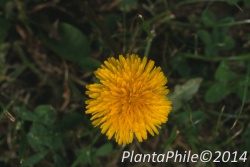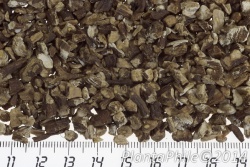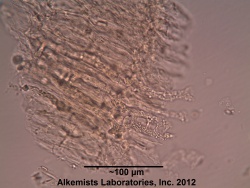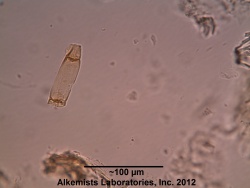|
AHPA recognizes other valuable resources exist regarding the identity of Taraxacum officinale.
To submit a suggestion or contribution, please contact Merle Zimmermann.
|
Nomenclature
Taraxacum officinale Weber ex F.H. Wigg. Asteraceae
Syn. Taraxacum dens-leonis Desf.; Taraxacum vulgare (Lam.) Schrank
Standardized common name (English): dandelion
Botanical Voucher Specimen
 |
|
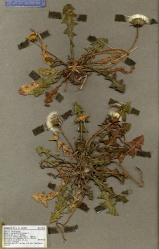
Source: MOBOT, Tropicos.org[1]
|
Organoleptic Characteristics
| [Taraxacum officinale ...] odor slight or inodorous; taste bitter.
All parts of the plant contain a milky bitterish juice, which exudes when they are broken or wounded.
Source: United States Dispensatory (1918) [2]
|
|
|
|
|
Macroscopic Characteristics
| The dandelion is an herbaceous plant, with a perennial fusiform root. The leaves, which spring immediately from the short upright rhizome, are long, pinnatifid, generally runcinate, with the divisions toothed, smooth, and of a fine 'green color. [...]
The flower-stem rises from the midst of the leaves, six inches or more in height. It is erect, simple, naked, smooth, hollow, fragile, and terminated by a large golden-colored flower, which closes in the evening and expands with the returning light of the sun. The involucre is smooth and double, with the outer scales bent downward. The florets are very numerous, ligulate, and toothed at their extremities. The receptacle is flat and naked. The pappus is stipulate, and at the period of maturity is disposed in a spherical form, and is so light and feathery as to be easily borne away by the wind, with the achene attached.
[The root is] externally brown or blackish-brown, longitudinally wrinkled, having numerous root and rootlet-scars; crown simple or branched with numerous leafbases showing annulate markings.
Source: United States Dispensatory (1918) [3]
|
|
|
|
|
Microscopic Characteristics
| Under the microscope, transverse sections of the root of Taraxacum show a porous, pale yellow wood from 1 to 4 mm. in diameter, surrounded by a light brown bark from 2 to 6 mm. in thickness, the latter composed of concentric layers of lacticiferous vessels and sieve tissues, alternating with whitish inulin-bearing parenchyma. The rhizome portions show a small pith. The powder is light brown; when examined under the microscope it exhibits parenchyma cells which are large, thin-walled and contain irregular masses of inulin; fragments with yellowish-brown lacticiferous vessels; trachea; reticulate; intermediate fibers non-lignified, with irregular, simple and oblique pores.
Source: United States Dispensatory (1918) [6]
|
|
|
|
|
High Performance Thin Layer Chromatographic Identification
Supplementary Information
Sources
- ↑ MOBOT, Tropicos.org http://www.tropicos.org/Image/100013664
- ↑ United States Dispensatory (1918)
- ↑ United States Dispensatory (1918)
- ↑ PlantaPhile http://plantaphile.com/
- ↑ PlantaPhile http://plantaphile.com/
- ↑ United States Dispensatory (1918)
- ↑ Elan M. Sudberg, Alkemist Laboratories http://www.alkemist.com
- ↑ Elan M. Sudberg, Alkemist Laboratories http://www.alkemist.com

